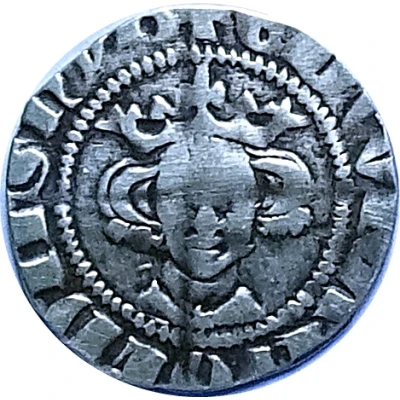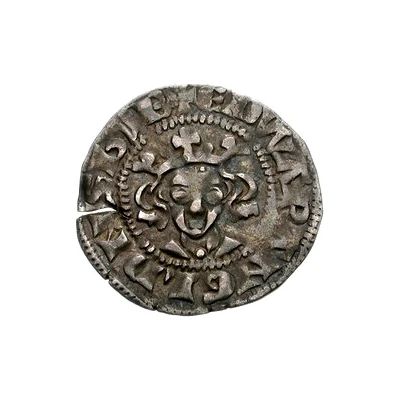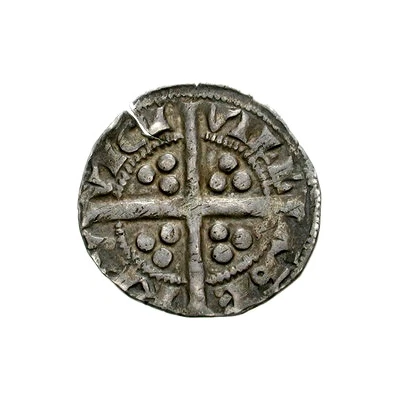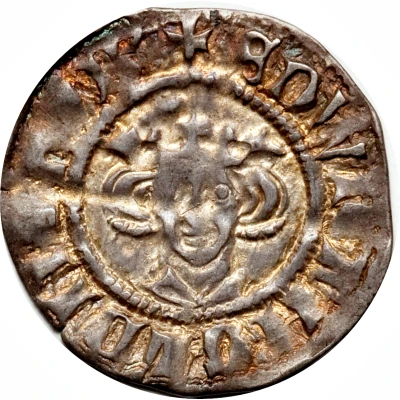


© Collector 86 (CC BY-NC-SA)
1 Penny - Edward I Sterling type; class 9a ND
| Silver (.925) | 0.9 g | 16.1 mm |
| Issuer | England (United Kingdom, British Overseas Territories and Crown Dependencies) |
|---|---|
| King | Edward I (1272-1307) |
| Type | Standard circulation coin |
| Years | 1299-1301 |
| Value | 1 Penny (1⁄240) |
| Currency | Pound sterling (1158-1970) |
| Composition | Silver (.925) |
| Weight | 0.9 g |
| Diameter | 16.1 mm |
| Shape | Round (irregular) |
| Technique | Hammered |
| Orientation | Medal alignment ↑↑ |
| Demonetized | Yes |
| Updated | 2024-10-09 |
| Numista | N#86437 |
|---|---|
| Rarity index | 82% |
Reverse
Long cross pattée, trefoil of pellets in angles, mint name around.
Script: Latin (uncial)
Lettering: CIVI TAS LON DON
Lettering (regular font): CIVI TAS LON DON
Translation: City of London
Comment
House of Plantagenet (1154-1399), Edward I (1272-1307), Sterling coinage (1279-1307), Class 9a penny.Struck at the London, Bury, Canterbury and Durham mints, c.1299-1301. For more detail, please see Rod Blunt's website here.
Interesting fact
The 1 Penny coin from Edward I's reign (1299-1301) was part of a larger currency reform that introduced a new standardized system of coinage in England. This reform, known as the "Sterling" system, established a set of standardized coin denominations and compositions that would be used for centuries to come. The 1 Penny coin was one of the smallest denominations in this system and was made of silver, which gave it a high level of durability and value. Despite its small size, this coin played an important role in everyday transactions and was widely used throughout England and its territories.



